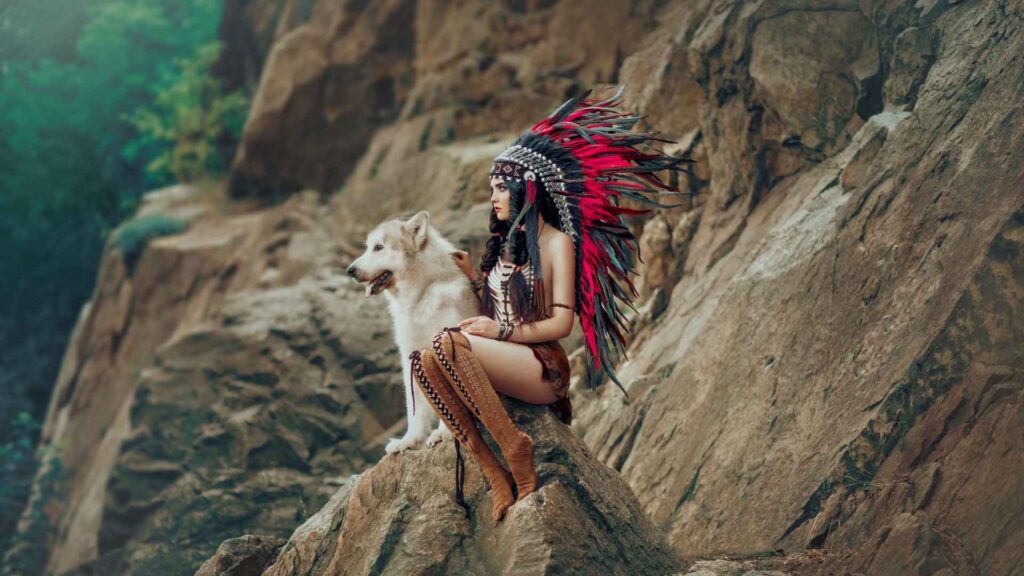Historical Roots and Indigenous Influence
Alaskan art, with its rich history and vibrant forms, serves as a window into the heart and soul of the region. From the earliest inhabitants to contemporary creators, the art scene in Alaska is as diverse as its landscape. The early beginnings of Alaskan art can be traced back to the indigenous peoples, who used materials from their natural surroundings to craft objects that were both functional and beautiful. Native Alaskan art is significant not just for its aesthetic appeal, but also for its role in preserving cultural traditions and stories.
The Russian influence on Alaskan art is evident in the intricate designs and techniques that were introduced during the period of Russian colonization. The Gold Rush era brought an influx of new ideas and artistic expressions, while the 20th century saw a blossoming of artistic creativity that continues to this day.
The Evolution of Alaskan Art
From the intricate beadwork of the Athabascan people to the masterful carvings of the Inupiaq, Alaskan art has evolved in response to both internal and external influences. The introduction of novel materials and methods during the Russian era had a significant impact on the growth of Alaskan art. The Gold Rush era, too, was a time of significant change, as artists from around the world flocked to Alaska, bringing with them new ideas and artistic styles.
The 20th century marked a period of revitalization for Alaskan art, as artists sought to reclaim their cultural heritage and express their unique identities through their work. Today, Alaskan art continues to evolve, embracing new mediums and techniques while remaining rooted in the traditions of the past.

Distinctive Art Forms of Alaska
Alaska’s art forms are as varied as its landscapes, ranging from the iconic totem poles of the Tlingit and Haida peoples to the intricate beadwork of the Athabascan tribes. Sculpture and carving are central to Alaskan art, with artists using materials such as wood, bone, and ivory to create stunning pieces that reflect their deep connection to the land. Textile arts, too, play a significant role, with artists creating beautiful garments, blankets, and wall hangings that tell stories of their cultures and histories.
Painting and drawing are also popular forms of expression in Alaska, with artists capturing the breathtaking beauty of the landscape and the vibrant cultures of the people. From traditional styles to contemporary approaches, Alaskan artists use a variety of techniques to create works that are both visually stunning and rich in meaning.
Renowned Alaskan Artists
Sydney Laurence, John Hoover, and Susie Silook are just a few of the many artists who have played a significant role in shaping the Alaskan art scene. Laurence, known for his stunning landscapes, captured the majesty of Alaska’s wilderness in his paintings, while Hoover’s sculptures and carvings reflect his deep respect for his Native Alaskan heritage. Silook, an Inupiaq carver, challenges traditional gender norms through her powerful sculptures, using her art to explore themes of identity and resilience.
Alaskan art is more than just a visual treat; it serves as a vital link to the past, preserving the stories, traditions, and values of the people. Through their work, artists help to educate both locals and visitors about the rich cultural heritage of the region, using their art as a medium for storytelling and cultural preservation.
The Alaskan Art Market
The Alaskan art market plays a crucial role in supporting local artists and preserving the region’s artistic heritage. Galleries and museums provide valuable platforms for artists to showcase their work, while art festivals and events offer opportunities for artists to connect with collectors and the wider community. Online platforms and e-commerce have also opened up new avenues for artists to reach a global audience, ensuring that Alaskan art continues to thrive in the digital age.
Despite the opportunities, Alaskan artists face a number of challenges, from economic hurdles to environmental concerns. The remote location of many communities can make it difficult for artists to access markets and materials, while the impacts of climate change pose a threat to the natural resources that are central to many art forms. Cultural appropriation is also a concern, with artists working to protect their intellectual property and ensure that their work is respected and valued.
Supporting Alaskan art and artists is crucial to ensuring the survival and growth of the region’s artistic heritage. By purchasing authentic pieces, engaging with the artistic community, and promoting indigenous art, we can help to sustain the vibrant art scene in Alaska and support the artists who are at the heart of it.
The Future of Alaskan Art
The future of Alaskan art is bright, with a new generation of artists emerging to carry on the traditions of their forebears while pushing the boundaries of what is possible. As we look to the future, it is crucial that we continue to support and preserve the artistic heritage of Alaska, ensuring that the beauty, stories, and traditions of the region continue to be celebrated for generations to come.
Conclusion
In conclusion, Alaskan art is a vibrant and vital part of the region’s cultural landscape, reflecting the diverse histories, cultures, and landscapes of Alaska. From traditional art forms to contemporary expressions, Alaskan artists continue to create works that are both beautiful and meaningful, preserving the rich artistic heritage of the region for future generations. By supporting Alaskan art and artists, we play a crucial role in ensuring that this vibrant art scene continues to thrive.